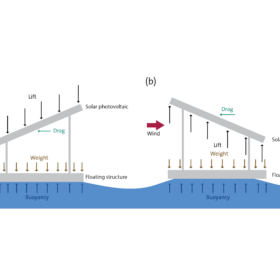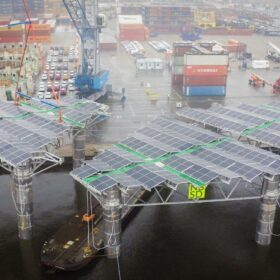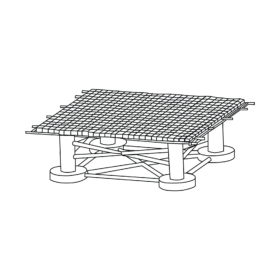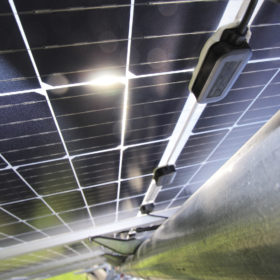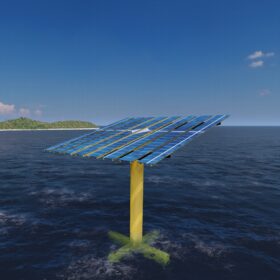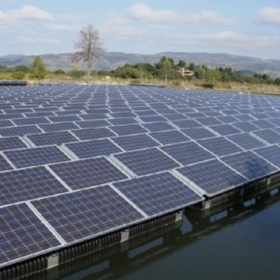How can policy help Portugal decarbonize?
With ambitious decarbonization targets and a favourable regulatory landscape, Portugal is an appealing market for renewable energy developers and producers. Like other European markets, however, Portugal’s clean energy industry faces challenges related to permitting, grid connection, and the availability of remuneration schemes – hurdles which threaten to slow the country’s energy transition.
Assessing wind sensitivity of offshore floating solar
Researchers in China have conducted a numerical study on the wind sensitivity of offshore floating solar plants. They have tested six row-arrangements of panels and have found an optimal system configuration that is reportedly less sensitive to wind direction.
Bureau Veritas certifies SolarDuck’s offshore PV platform
Certification specialist Bureau Veritas has awarded what is says is the world’s first prototype certification for a floating offshore solar solution. It will now be deployed in the North Sea, off the coast of The Hague.
New modular design for offshore floating photovoltaic platforms
A team of scientists from China and the United States studied ways to optimize floating photovoltaics for offshore use. It found that the robustness of the systems was influenced by the size and number of platforms, as well as the types of connections between platforms.
German consultancy finalizes feasibility stage of Ugandan floating PV project
A consortium involving 8.2 Renewable Energy Experts Hamburg and its partners has completed a feasibility assessment for a floating PV system on four reservoirs of different hydropower plants in Uganda.
All floating PV technologies at a glance
An international research team has produced a comprehensive overview of more than 300 works of published literature on floating PV, spanning 2013 to 2022. The scientists laid out the benefits and challenges of the technology and pointed to gaps that should be filled with future studies.
New research analyzes performance ratios of bifacial PV
A comparison between monofacial and bifacial PV systems in Ghana showed how changes in system parameters can affect the bifacial gains. The researchers found that changing the albedo of a land-based system can increase the bifacial gain from 5.25% to 14.5%.
Ciel & Terre, Hexa Renewables round off 440 MW floating PV array
Ciel & Terre and Hexa Renewables have completed a 192.3 MW extension of a 440 MW floating PV array in Taiwan. The extension includes patented technology featuring concrete pillars and an H-beam system as an anchoring design, in order to address near-shore environmental challenges.
Offshore floating PV system based on dual-axis tracker, tension leg platform
Developed by scientists in Spain, the HelioSea system is reportedly able to ensure structural reliability in challenging marine environments. The research group proposed to use tension leg platforms that have been successfully applied to offshore drilling platforms, where stability is also paramount.
Larsen & Toubro wins 75 MW floating solar project
Larsen & Toubro, an Indian engineering, procurement, and construction (EPC) specialist, has secured a contract to build a 75 MW floating solar plant on a dam in India.

